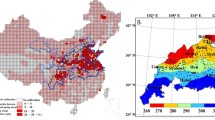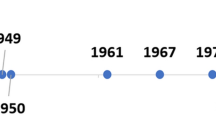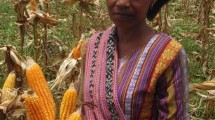Abstract
The reduction of the yield gap is one of the strategies implemented for the improvement of food security. In this research, the yield gap of wheat in the west of Golestan province, Iran, was estimated using a two-step methodology. In the first step, the potential yield was evaluated using the SSM-iCrop2 model and in the following, the yield gap was determined by the difference between the actual yield and potential yield. In the second step, the NDVI-actual yield regression in parallel with boundary-line analysis was used to assess the attainable yield. The estimated attainable yield varied from 3.0 to 5.8 t ha−1. Accordingly, the attainable yield gap in the studied region was 2.6 t ha−1 on average, which could be obtained via improved management. Also, based on model outputs, the potential yield varied from 5.4 to 7.2 t ha−1 which suggests a high possibility to improve wheat yield in the west parts of Golestan province. The results of the study provided basic information to quantify the yield gap and yield optimization options. Our results revealed that remote sensing in combination with crop simulation models is a powerful tool in regional assessments and removes the limitations of working with point data.









Similar content being viewed by others
References
Abravan, P., Soltani, A., Majidian, M., & Mohsenabadi, G. (2016). Factors limiting canola yield and determining their optimum range by boundary line analysis. Iioab Journal, 7(8), 161–167.
Alizadeh, P., Kamkar, B., Shataee, S., & Kazemi, H. (2018). Estimation of changes in land area under wheat and soybean cultivation using satellite images classification techniques in the west of Golestan province. Applied Research in Field Crops, 31(3), 41–61., (In Persian with English abstract).
Bala, S., & Islam, A. (2009). Correlation between potato yield and MODIS-derived vegetation indices. International Journal of Remote Sensing, 30(10), 2491–2507.
Connor, D. J., Loomis, R. S., & Cassman, K. G. (2011). Crop ecology: Productivity and management in agricultural systems. Cambridge: Cambridge University Press.
Evans, L., & Fischer, R. (1999). Yield potential: Its definition, measurement, and significance. Crop Science, 39(6), 1544–1515.
Gorjizad, A., Dastan, S., Soltani, A., & Norouzi, H. A. (2019). Large scale assessment of the production process and rice yield gap analysis by comparative performance analysis and boundary-line analysis methods. Italian Journal of Agronomy, 14(2), 123–131.
Hajarpour, A. (2016). Evaluation of wheat yield gap in Golestan province. Ph.D. thesis. Gorgan University of Agricultural Sciences and Natural Resources. (In Persian).
Hajjarpoor, A., Soltani, A., Zeinali, E., Kashiri, H., Aynehband, A., & Vadez, V. (2018). Using boundary line analysis to assess the on-farm crop yield gap of wheat. Field Crops Research, 225, 64–73.
Hochman, Z., Gobbett, D., Horan, H., & Garcia, J. N. (2016). Data rich yield gap analysis of wheat in Australia. Field Crops Research, 197, 97–106.
Kogan, F. N. (2000) Contribution of remote sensing to drought early warning. In D. A. Wilhite, M. V. K. Sivakumar & D. A. Wood (Eds.) Early warning systems for drought preparedness and drought management (pp. 86–100). Geneva: World Meteorological Organization.
Koo, J., & Dimes, J. (2015). HC27 Generic Soil Profile Database. hdl:1902.1/20299, Harvard Dataverse, V5.
Kross, A., McNairn, H., Lapen, D., Sunohara, M., & Champagne, C. (2015). Assessment of RapidEye vegetation indices for estimation of leaf area index and biomass in corn and soybean crops. International Journal of Applied Earth Observation and Geoinformation, 34, 235–248.
Li, Y., Zhou, Q., Zhou, J., Zhang, G., Chen, C., & Wang, J. (2014). Assimilating remote sensing information into a coupled hydrology-crop growth model to estimate regional maize yield in arid regions. Ecological Modeling, 291, 15–27.
Lobell, D. B., Cassman, K. G., & Field, C. B. (2009). Crop yield gaps: Their importance, magnitudes, and causes. Annual Review of Environment and Resources, 34, 179–204.
Makowski, D., Doré, T., & Monod, H. (2007). A new method to analyse relationships between yield components with boundary lines. Agronomy for Sustainable Development, 27(2), 119–128.
Ministry of Agriculture Jihad. (2015). https://www.maj.ir. Accessed 3 Dec 2019.
Mkhabela, M., Bullock, P., Raj, S., Wang, S., & Yang, Y. (2011). Crop yield forecasting on the Canadian Prairies using MODIS NDVI data. Agricultural and Forest Meteorology, 151(3), 385–393.
Mkhabela, M. S., Mkhabela, M. S., & Mashinini, N. N. (2005). Early maize yield forecasting in the four agro-ecological regions of Swaziland using NDVI data derived from NOAA’s-AVHRR. Agricultural and Forest Meteorology, 129(1–2), 1–9.
Mohammadi Ahmad Mahmoudi, E., Kamkar, B., & Abdi, O. (2015). Comparison of geostatistical- and remote sensing data-based methods in wheat yield predication in some of growing stages (A case study: Nemooneh filed, Golestan province). Journal of Crop Production, 8, 51–76., (In Persian with English abstract).
Nehbandani, A. R., Soltani, A., Zeinali, E., Hoseini, F., Shahhoseini, A., & Mehmandoei, M. (2017). Soybean (Glycine max L. Merr.) yield gap analysis using boundary line method in Gorgan and Aliabad Katul. Journal of Agroecology, 9(3), 760–776., (In Persian with English abstract).
Patrignani, A., Lollato, R. P., Ochsner, T. E., Godsey, C. B., & Edwards, J. (2014). Yield gap and production gap of rainfed winter wheat in the southern Great Plains. Agronomy Journal, 106(4), 1329–1339.
Pourhadian, H., Kamkar, B., Soltani, A., & Mokhtarpour, H. (2019). Evaluation of forage maize yield gap using an integrated crop simulation model-satellite imagery method (Case study: four watershed basins in Golestan Province). Archives of Agronomy and Soil Science, 65(2), 253–268.
Shatar, T., & McBratney, A. (2004). Boundary-line analysis of field-scale yield response to soil properties. The Journal of Agricultural Science, 142(5), 553–560.
Shokrgozardarabi, M., Soltani, A., & Zeinali, E. (2018). Study of cotton yield gap with boundary-line analysis in the Aq-Qala and Ali Abad Katul cities in the Golestan Province, Iran. Journal of Crop Production, 11, 15–28., (In Persian with English abstract).
Soltani, A. (2007). Use of the SAS statistical analysis software. Mashhad’s Jihad-e-Daneshgahi Publications: Mashhad. (In Persian).
Soltani, A. (2009). Mathematical modeling in filed crops.. Mashhad’s Jihad-e-Daneshgahi: Mashhad. (In Persian).
Soltani, A., & Sinclair, T. R. (2011). A simple model for chickpea development, growth and yield. Field Crops Research, 124(2), 252–260.
Soltani, A., & Sinclair, T. R. (2012). Modeling physiology of crop development, growth and yield. Wallingford: CABI.
Son, N., Chen, C., Chen, C., Minh, V., & Trung, N. (2014). A comparative analysis of multitemporal MODIS EVI and NDVI data for large-scale rice yield estimation. Agricultural and Forest Meteorology, 197, 52–64.
van Dijk, M., Morley, T., Jongeneel, R., van Ittersum, M., Reidsma, P., & Ruben, R. (2017). Disentangling agronomic and economic yield gaps: An integrated framework and application. Agricultural Systems, 154, 90–99.
Van Ittersum, M. K., & Cassman, K. G. (2013). Yield gap analysis—Rationale, methods and applications—Introduction to the special issue. Amsterdam: Elsevier.
van Ittersum, M. K., & Rabbinge, R. (1997). Concepts in production ecology for analysis and quantification of agricultural input–output combinations. Field Crops Research, 52(3), 197–208.
Author information
Authors and Affiliations
Corresponding author
Ethics declarations
Conflict of interest
The authors declare that they have no conflict of interest.
Additional information
Publisher's Note
Springer Nature remains neutral with regard to jurisdictional claims in published maps and institutional affiliations.
Rights and permissions
About this article
Cite this article
Dehkordi, P.A., Nehbandani, A., Hassanpour-bourkheili, S. et al. Yield Gap Analysis Using Remote Sensing and Modelling Approaches: Wheat in the Northwest of Iran. Int. J. Plant Prod. 14, 443–452 (2020). https://doi.org/10.1007/s42106-020-00095-4
Received:
Revised:
Accepted:
Published:
Issue Date:
DOI: https://doi.org/10.1007/s42106-020-00095-4




